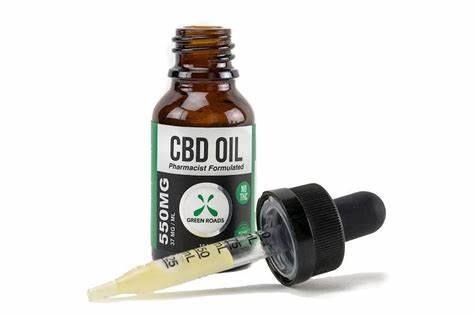Cannabidiol, or CBD, is a compound found in the cannabis plant that has gained popularity in recent years for its potential health benefits. One of the most commonly cited benefits of CBD is its ability to relieve pain. This article will explore the science behind CBD oil for pain relief and how it works.
What is CBD oil?
CBD oil is a concentrated extract made from the flowers and leaves of the cannabis plant. CBD is one of the many cannabinoids found in cannabis, along with tetrahydrocannabinol (THC). Unlike THC, CBD does not produce “high” or psychoactive effects. This makes it a popular option for those seeking the potential benefits of cannabis without the mind-altering effects.
CBD oil is typically made by extracting the CBD compound from the plant using a solvent such as carbon dioxide or ethanol. The extract is then blended with a carrier oil, such as coconut or hemp seed oil, to create a concentrated product that can be consumed orally or applied topically.
How does CBD oil work for pain relief?
CBD oil works by interacting with the body’s endocannabinoid system (ECS). The ECS is a complex network of receptors and neurotransmitters that help regulate various physiological processes, including pain sensation.
When CBD is consumed or applied topically, it interacts with the ECS to help reduce pain and inflammation. Specifically, CBD binds to the CB1 and CB2 receptors in the ECS, which are located throughout the body.
CB1 receptors are primarily found in the central nervous system, while CB2 receptors are mainly found in the immune system and peripheral tissues. When CBD binds to these receptors, it can help reduce pain and inflammation by blocking the transmission of pain signals and reducing the release of inflammatory molecules.
In addition to its effects on the ECS, CBD also has antioxidant and anti-inflammatory properties, which can help reduce pain and inflammation in a variety of ways.
What types of pain can CBD oil help with?
CBD oil has been studied for its potential to help with a variety of different types of pain, including:
- Chronic pain: CBD oil has been shown to help reduce chronic pain associated with conditions such as arthritis, multiple sclerosis, and fibromyalgia.
- Neuropathic pain: CBD oil may be helpful for reducing neuropathic pain, which is caused by damage or dysfunction of the nervous system.
- Cancer-related pain: CBD oil may help reduce pain and improve the quality of life for people with cancer-related pain.
- Headaches and migraines: Some people find that CBD oil can help reduce the frequency and intensity of headaches and migraines.
- Menstrual cramps: CBD oil may help reduce the pain and discomfort associated with menstrual cramps.
It’s important to note that while CBD oil may be helpful for some people, it is not a cure-all for pain. It’s always a good idea to consult with a healthcare provider before using CBD oil, especially if you are taking other medications or have a medical condition.
How to use CBD oil for pain relief
There are several different ways to use CBD oil for pain relief, including:
- Oral consumption: CBD oil can be consumed orally by placing drops under the tongue or mixing it into food or beverages.
- Topical application: CBD oil can be applied topically to the skin in the form of a cream, lotion, or balm.
- Inhalation: CBD oil can be inhaled using a vaporizer or e-cigarette.
It’s important to note that the optimal dosage of CBD oil for pain relief can vary depending on the individual and the severity of their pain. It’s always a good idea to start with a low dose and gradually increase it as needed.
Are there any side effects to using CBD for pain relief?
While CBD oil is generally considered safe, it can cause some side effects in certain individuals. Common side effects of CBD oil include:
- Dry mouth
- Dizziness
- Changes in appetite and weight
- Fatigue
- Diarrhea
It’s also possible for CBD oil to interact with certain medications, including blood thinners and antidepressants. For this reason, it’s essential to consult with a healthcare provider before using CBD oil if you are taking other medications.
Conclusion:
CBD oil has shown promise as a potential treatment for pain relief. Its ability to interact with the body’s endocannabinoid system and reduce pain and inflammation makes it a popular option for those seeking natural remedies for pain. However, it’s important to note that while CBD oil may be helpful for some people, it is not a cure-all for pain and should be used under the guidance of a healthcare provider. If you’re interested in using CBD oil for pain relief, be sure to do your research and choose a reputable brand. Look for products that have been third-party tested for quality and purity. And always start with a low dose and gradually increase as needed, paying attention to any side effects that may arise. Overall, CBD oil shows promise as a natural option for pain relief, but more research is needed to fully understand its potential benefits and risks.





